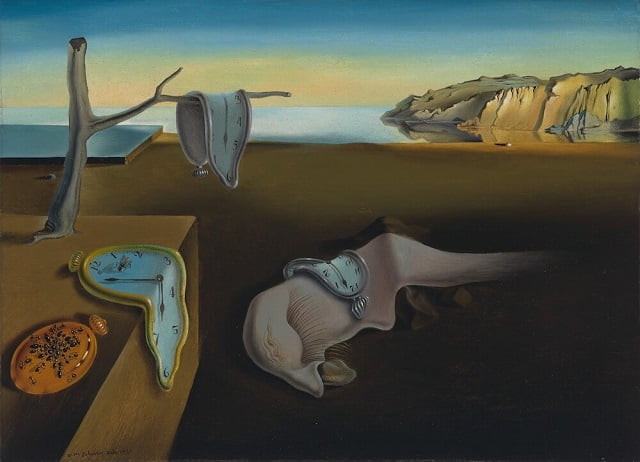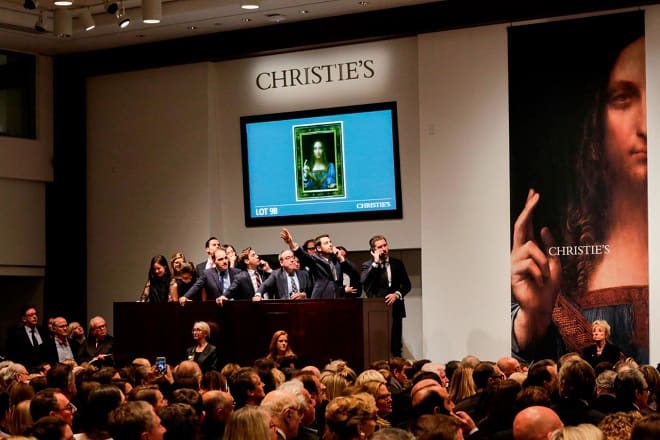How to Invest in Fine Art?
Welcome to our comprehensive guide on “How to Invest in Fine Art?”—your gateway to mastering the intricate world of art investment and unlocking its potential for lucrative returns. If you’ve ever wondered how to turn your passion for art into a sound financial strategy, you’re in the right place.
Investing in fine art can be a lucrative venture, merging passion with profit. Whether you’re a seasoned collector or a beginner in the art world, understanding the nuances of art investment is crucial. In this guide, we will navigate through the intricate realm of fine art investments, exploring valuable insights to help you make informed decisions and maximize your returns.
As we delve into the realms of art valuation, portfolio diversification, legal considerations, and emerging trends such as NFTs and digital art, you will gain a comprehensive understanding of the key factors that drive successful art investments. Our aim is not only to demystify the art investment process but also to inspire and guide you toward making well-informed choices that align with your financial goals and artistic passions.
So, let’s embark on this enriching journey together, exploring the art of investment and discovering how you can leverage the timeless beauty of fine art to create a financially rewarding future.
Art Investment Strategies: How to Invest in Fine Art?
Understanding the Fine Art Market: Unlocking Profit Potential
The fine art market is a dynamic and multifaceted arena where artworks are bought and sold, often fetching substantial sums of money. To invest wisely in fine art, it’s crucial to grasp the underlying factors that influence this market. Here, we’ll delve into the intricacies of the fine art market, shedding light on the key elements that can help you unlock its profit potential.

How to Invest in Fine Art and Art Prints?
1- Historical Trends and Influential Movements
Fine art has seen various movements over centuries, from Renaissance and Baroque to Impressionism and Contemporary art. Analyzing historical trends helps investors identify artists whose works have consistently appreciated over time. For instance, the Renaissance period witnessed the works of masters like Leonardo da Vinci and Michelangelo, whose pieces continued to hold immense value.
2- Supply and Demand Dynamics
Scarcity drives value in the art market. Artworks by renowned artists who produced limited pieces or specific series tend to be in high demand.
Collectors and investors compete for these scarce items, often leading to significant price increases. Researching artists with limited output can offer valuable investment opportunities.

Salvador Dali’s unique work The Persistence of Memory (1931) – How to Invest in Fine Art?
3- Art Auctions and Their Significance
Art auctions, conducted by prestigious houses like Christie’s and Sotheby’s, set benchmarks for art prices.
Studying successful auctions can provide insights into which artists and genres are currently favored by collectors.
Recommended For You – Contemporary Art Auctions

Sotheby’s and Christie’s Auction Houses – How to Invest in Fine Art?
Additionally, understanding bidding strategies, such as proxy bidding and bidding increments, is crucial for successful participation in auctions.
4- Influential Art Fairs and Exhibitions
Art fairs and exhibitions serve as global hubs for art enthusiasts.
Investors can discover emerging talents, gauge market trends, and network with artists and dealers. Participating in these events allows investors to assess artworks in person, enabling a more informed decision-making process.
5- Online Art Marketplaces
Online platforms like Artsy, Saatchi Art, and Artnet have revolutionized art transactions. These platforms offer a vast array of artworks from artists worldwide.
Investors can explore digital art, traditional paintings, sculptures, and more. Understanding the authentication processes, transaction security, and delivery options on these platforms is crucial for online art investments.
6- Economic and Cultural Factors
Economic factors, such as interest rates and disposable income, influence art purchases. During economic downturns, art can serve as a safe haven investment, leading to increased demand for certain artists or genres.
Cultural influences, including art-related events and government initiatives, can also impact the market. For instance, a government supporting local artists might boost the value of artworks from that region.
By delving into these aspects of the fine art market, investors can gain a comprehensive understanding of the forces driving art prices.
Remember, continuous research, staying updated with market trends, and networking within the art community are essential practices for successful art investments. In the subsequent sections, we’ll explore strategies for building a diversified art portfolio and navigating legal considerations, ensuring you’re well-prepared for your art investment journey.
Building a Solid Art Investment Portfolio: Diversification and Risk Management
Investing in art, like any other asset class, requires a strategic approach. Building a solid art investment portfolio involves careful diversification and effective risk management strategies to safeguard your investments.
1- Diversification in Art Investment
Diversifying your art portfolio involves spreading your investments across different artists, genres, time periods, and mediums. This approach helps mitigate risks associated with the volatility of individual artists or art styles.
For example, investing in a mix of established masters, emerging artists, and contemporary talents can balance potential gains and losses. Similarly, diversifying across mediums like paintings, sculptures, and digital art can provide stability.
Risk Mitigation Through Artist Variety
By investing in multiple artists, you’re less vulnerable to fluctuations in a single artist’s market value. Established artists might offer stability while emerging artists could provide high growth potential.

Risk Mitigation Through Artist Variety – How to Invest in Fine Art? – Image by Saskia Eijkelhof
Genre and Medium Diversification
Different art genres (e.g., abstract, figurative, conceptual) and mediums (e.g., oil paintings, sculptures, digital art) have varied market demands. A diverse portfolio ensures that changes in market preferences don’t significantly impact your overall investments.
2- Risk Management Strategies
Art investments come with inherent risks, including fluctuations in demand, art market trends, and economic conditions. Implementing effective risk management strategies is crucial for long-term success.
Thorough Research and Due Diligence
Investigate the background of artists and artworks before investing. Understand their market reputation, historical price trends, and critical acclaim. Proper due diligence minimizes the risk of investing in overhyped or overpriced pieces.
Insurance and Art Storage
Safeguard your art collection by insuring each piece against damage, theft, or loss.

Insurance and Art Storage – Investing in art.
Proper storage and climate control are essential to preserve the artworks’ condition, ensuring they retain their value over time.
Stay Updated with Market Trends
The art market is dynamic, and influenced by trends, exhibitions, and art world news. Keeping abreast of these developments enables you to anticipate market shifts and make informed decisions.
Recommended For You – The World’s 10 Most Valuable Paintings in Museums
Professional Guidance
Consulting with art advisors, appraisers, or dealers can provide expert insights.
Professionals can guide you on potential investments, authenticate artworks, and help assess market conditions, reducing the risk of uninformed decisions.
Exit Strategies
Have clear exit strategies in place, especially for high-value investments. This could involve selling artworks strategically during market peaks or using them as collateral for loans.
3- Long-Term Vision and Patience
Art investment is often a long-term endeavor.
Artworks tend to appreciate in value over time, especially if the artists gain recognition or historical significance. Patience is key, allowing you to weather short-term market fluctuations and capitalize on long-term appreciation.
By diversifying your art investments intelligently and implementing effective risk management strategies, you can build a robust art portfolio that stands the test of time.
In the following sections, we’ll explore the nuances of art valuation, legal considerations, and emerging trends, providing you with a comprehensive toolkit for successful art investment.
Navigating the Legal and Ethical Aspects: Due Diligence in Art Investment
When delving into the world of art investment, understanding the legal and ethical aspects is paramount. Due diligence not only protects your investment but also ensures you are ethically responsible.

The Legal and Ethical Aspects of Art – How to Invest in Fine Art and Art Prints?
1- Provenance Research
Provenance, or the documented history of ownership of an artwork, is crucial.
A clear and unbroken provenance enhances the artwork’s value. Investigate the artwork’s history to ensure it hasn’t been involved in any disputes, thefts, or forgeries.
Authenticity and legitimacy are the cornerstones of any valuable art piece.
Document Verification
Scrutinize all available documents, including sales receipts, exhibition records, and certificates of authenticity. Thoroughly verify the legitimacy of these documents and cross-reference them with reputable databases and archives.
Artwork Title and Artist Attribution
Confirm the legal title of the artwork and ensure it’s attributed to the correct artist. This prevents potential legal disputes in the future and guarantees the artwork’s authenticity.
2- Cultural Heritage and Repatriation Laws
Respect cultural heritage laws, especially concerning artifacts and artworks of historical or cultural significance.
Many countries have strict laws regarding the export and ownership of culturally important items. Ensure your prospective investment complies with these regulations to avoid legal complications.
Nagpra and International Agreements
Understand laws like the Native American Graves Protection and Repatriation Act (Nagpra) in the U.S. and international agreements like UNESCO conventions. These regulations protect cultural heritage and indigenous artworks, ensuring they aren’t exploited or traded illegally.
3- Copyright and Intellectual Property Rights
Artworks are intellectual property, and artists retain copyright unless explicitly transferred.
Understand the copyright status of the artwork and respect intellectual property rights.
Unauthorized reproductions or commercial use of copyrighted artworks can lead to legal consequences.
Fair Use and Public Domain
Familiarize yourself with the concept of fair use in copyright law. Artworks in the public domain are not protected by copyright and can be freely used, but determining public domain status requires careful research.
4- Transparency in Art Transactions
Transparent transactions are essential for ethical art investment. Ensure all transactions, including purchases, sales, and commissions, are well-documented and comply with local tax laws. Avoid engaging in deals that involve money laundering, tax evasion, or any other illegal activities.

Transparency in Art Transactions – How to Invest in Fine Art?
Receipts and Contracts
Obtain detailed receipts for all transactions. Contracts, especially for significant purchases, should clearly outline the terms, conditions, provenance details, and responsibilities of both parties. Legal advice might be necessary for complex transactions.
5- Ethical Considerations
Ethical art investment involves supporting artists and communities while respecting their cultural and moral values. Avoid investing in artworks associated with controversial or harmful practices.
Ethical investors often contribute to art education, preservation, and community development initiatives.
Navigating the legal and ethical aspects of art investment demands meticulous research, adherence to laws, and ethical responsibility. By conducting due diligence and investing ethically, you not only protect your investments but also contribute positively to the art ecosystem.
In the subsequent sections, we’ll explore art valuation techniques and avenues for art investment, equipping you with comprehensive knowledge for your investment journey.
Decoding Art Valuation: Expert Tips on Assessing Artwork Worth
Art valuation is a multifaceted process that combines artistic merit, historical significance, market demand, and expert opinions. Mastering the art of valuing artworks is crucial for making informed investment decisions.
1- Expert Appraisals and Art Advisors
Engaging certified art appraisers or experienced art advisors is fundamental. These professionals have extensive knowledge of art history, market trends, and valuation methodologies. Their expertise provides a reliable baseline for determining the artwork’s value.
Credentials and Experience
Ensure the appraiser or advisor has relevant qualifications and a proven track record. Experienced professionals often have a nuanced understanding of the market, enabling accurate valuations.
2- Comparative Market Analysis (CMA)
A Comparative Market Analysis involves comparing the artwork with similar pieces that have recently sold or are currently on the market.

Comparative Market Analysis (CMA) – Investing in Art.
Factors such as artist reputation, medium, size, and historical significance are considered. CMAs provide insights into the artwork’s market value within a specific context.
Auction Results
Analyze auction results of artworks by the same artist or similar style. Auction prices reflect real-time market demand and can be indicative of an artwork’s current value.
3- Condition and Preservation
The artwork’s physical condition significantly impacts its value. Artworks in pristine condition command higher prices.
Factors like restoration, damage, and overall preservation efforts influence valuation.
Conservation Records
Artworks with well-documented conservation efforts often maintain or enhance their value. Records indicating professional restoration work can reassure potential buyers or investors.
4- Artist Reputation and Historical Significance
Established artists with recognized bodies of work generally have higher market values. Historical significance, such as artworks from pivotal periods in an artist’s career, can substantially elevate the artwork’s worth.
Catalogue Raisonné
Consult a cataloge raisonné, a comprehensive listing of an artist’s works. Inclusion in such a catalog adds credibility and authenticity, positively influencing the artwork’s value.
5- Artistic Merit and Critical Acclaim
Artistic quality, creativity, and critical acclaim contribute to an artwork’s value.
Positive reviews, awards, or exhibition history can bolster the artwork’s reputation and, consequently, its market price.
Art Critics and Reviews
Pay attention to reviews by reputable art critics. Positive critiques from established art authorities can enhance the artwork’s value.
6- Market Demand and Art Trends
Stay attuned to current market trends and popular artists or styles.
Artworks in high demand due to contemporary relevance or emerging market trends can experience rapid appreciation.
Contemporary Relevance
Artworks addressing current social, political, or cultural themes often garner attention and higher prices due to their relevance.
By combining these valuation techniques, investors can assess an artwork’s worth comprehensively. It’s essential to continuously research market trends, consult experts, and stay updated with art world developments to make informed investment decisions.
Where to Invest: Auctions, Galleries, and Online Platforms
Deciding where to invest in art is a pivotal step in your art investment journey. Each avenue—auctions, galleries, and online platforms—offers distinct advantages and considerations.
1- Auctions
Art auctions, both physical and online, provide a dynamic environment for buying and selling artworks. Auction houses like Christie’s, Sotheby’s, and Phillips host prestigious events, attracting high-net-worth collectors and investors. Participating in auctions offers unique advantages:
Market Transparency
Auction results offer transparent insights into artworks’ values, reflecting current market demand.

Auctions- Eduardo Munoz Alvarez/Getty Images North America/Getty Images – How to Invest in Fine Art?
Prices achieved during auctions serve as benchmarks for similar artworks.
Opportunity for Bargains
Occasionally, artworks may be undervalued or overlooked, presenting opportunities for savvy investors to acquire pieces at lower prices than their market value.
Networking
Auctions facilitate networking with collectors, art professionals, and potential buyers, offering opportunities for valuable connections within the art community.
Auction Houses’ Expertise
Auction houses employ experts who authenticate artworks, ensuring buyers invest in genuine pieces. These professionals provide valuable insights into the artworks’ provenance and historical significance.
2- Galleries
Art galleries, both traditional brick-and-mortar spaces and online galleries, represent artists and showcase their works. Investing through galleries offers unique benefits:
Curated Selection
Galleries curate their collections, showcasing artworks vetted by experts. This curated approach ensures you’re exposed to high-quality, potentially valuable pieces.
Direct Interaction
Engaging with gallery owners and artists allows you to gain firsthand insights into artworks.
Artists’ perspectives, techniques, and inspirations can enhance your understanding of the pieces you’re interested in.
Supporting Emerging Artists
Galleries often represent emerging artists whose works can be appreciated significantly as their careers advance. Supporting these artists at an early stage can result in substantial returns on investment.
Art Appreciation Events
Galleries host exhibitions, openings, and events, providing opportunities to immerse yourself in the art world and broaden your knowledge.
3- Online Platforms
Online platforms, such as Artsy, Saatchi Art, and Artnet, have transformed the art market, making it accessible to a global audience.
Global Reach
Online platforms connect buyers and sellers from around the world, expanding your options beyond geographical constraints.
You can explore artworks from diverse cultures and artistic styles.
Convenience
Online platforms provide a convenient way to explore and purchase artwork from the comfort of your home. Detailed information, including artist bios and artwork descriptions, is readily available.
Emerging Artists and Niche Markets
Online platforms often feature emerging artists and niche markets, allowing you to discover unique, avant-garde, or culturally specific artworks that might not be easily accessible through traditional avenues.
Transparent Pricing
Many online platforms provide transparent pricing, allowing you to compare prices and make informed decisions.
Additionally, online reviews and ratings can offer insights into the reputation of artists and sellers.
Before making art investments, conduct thorough research and due diligence. Understand the terms and conditions of the auction houses, galleries, or online platforms you’re considering.
Whether you choose auctions for their excitement and market transparency, galleries for curated selections and direct interactions, or online platforms for global accessibility and convenience, each option offers opportunities for art enthusiasts and investors alike. By combining your knowledge of art valuation and these investment avenues, you can make well-informed decisions tailored to your investment goals and preferences.
Taxation and Art Investment: Maximizing Profits While Staying Compliant
Understanding the tax implications of art investment is crucial for maximizing profits and ensuring compliance with legal requirements.

Taxation and Art Investment – How to Invest in Fine Art?
1- Capital Gains Tax
In many countries, profits from selling artworks are subject to capital gains tax. The tax rate can vary based on factors such as the holding period and the seller’s overall income.
Understanding the applicable capital gains tax rate is essential for accurate financial planning.
Tax-Deferred Exchanges
Some jurisdictions offer tax-deferred exchanges, allowing investors to defer capital gains tax by reinvesting the proceeds from art sales into other qualifying artworks. This strategy can be beneficial for long-term investors looking to diversify their portfolios.
2- Inheritance and Estate Tax
Artworks passed down through generations are subject to inheritance and estate tax. Valuation of artworks for taxation purposes is crucial in this context.
Proper valuation can help heirs accurately assess their tax liabilities and plan accordingly.
Tax Planning Strategies
Estate planning techniques, such as establishing trusts or foundations, can be used to minimize inheritance tax. These strategies require careful legal and financial planning and often involve consulting with legal and tax professionals.
3- Value-Added Tax (VAT) and Sales Tax
The sale of artworks might be subject to value-added tax or sales tax, depending on the jurisdiction. VAT or sales tax rates can vary significantly between countries and even regions within a country. Sellers and buyers need to be aware of these taxes to avoid unexpected financial obligations.
Tax Exemptions
Some jurisdictions offer VAT or sales tax exemptions for certain types of artworks, especially those considered culturally or historically significant. Researching these exemptions and complying with the necessary documentation requirements is essential for tax efficiency.
4- Art Investment as Business Income
For individuals or entities engaged in the business of buying and selling artworks, profits might be treated as business income. This can have different tax implications compared to capital gains tax, including deductions for business-related expenses.
Record-Keeping
Maintaining meticulous records of art transactions, expenses, and sales is critical for businesses involved in art investment. Proper record-keeping ensures accurate tax reporting and compliance with tax regulations.
5- Cross-Border Transactions
Cross-border art transactions often involve complex tax considerations, including withholding taxes and double taxation agreements between countries.
Investors involved in international art deals must be aware of these issues to optimize tax outcomes and prevent legal complications.
Tax Treaties
Understanding tax treaties between countries can help investors determine which country has the taxing rights on profits from cross-border art sales. Tax treaties often contain provisions to prevent double taxation.
6- Professional Tax Advice
Given the intricacies of art taxation, seeking advice from tax professionals who specialize in art investments is highly recommended. These professionals can provide tailored guidance, ensuring compliance with local and international tax laws while maximizing profits.
By staying informed about taxation principles related to art investment and seeking professional advice when needed, investors can optimize their profits, minimize tax liabilities, and ensure compliance with legal requirements. This knowledge empowers investors to make informed financial decisions, protecting their investments and preserving their wealth.
References:
- https://www.forbes.com/sites/theyec/2020/01/10/investing-in-art-an-introduction-for-the-skeptic/?sh=341ede3833fb
- https://www.wallsofart.us/why-invest-in-art
- https://www.linkedin.com/pulse/art-market-regulation-why-badly-needed-kenny-ackerman/
- Main image from GETTY.
- https://bruynzeel.co.uk/applications/museum/art
- https://www.nature.com/collections/jbejgbfjaj
- https://en.top.legal/knowledge/contract-parameters
- https://www.passiverealestateinvesting.com/real-estate-market-analysis/
- https://paytm.com/blog/mutual-funds/taxation-of-mutual-funds/









You’re so awesome! I don’t believe I have read a single thing like that before. So great to find someone with some original thoughts on this topic. Really.. thank you for starting this up. This website is something that is needed on the internet, someone with a little originality!
Thank you. Please stay follow for more interesting contents.
Hi,
This article is a testament to your expertise and commitment to quality content.
Thank you!
Thanks Michael!
Your post really made me think. I appreciate the new perspectives you’ve introduced here. Keep up the excellent work!
Thank you.